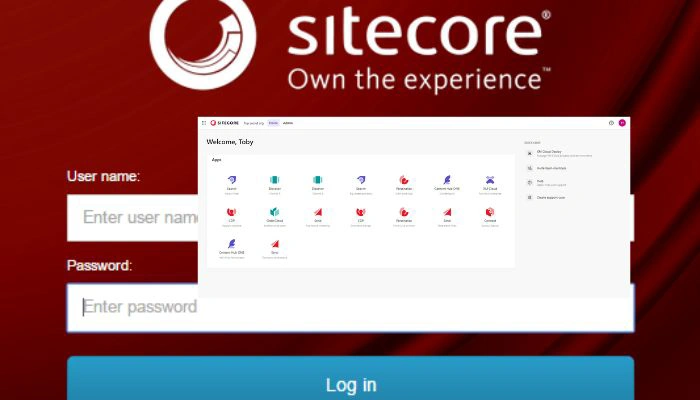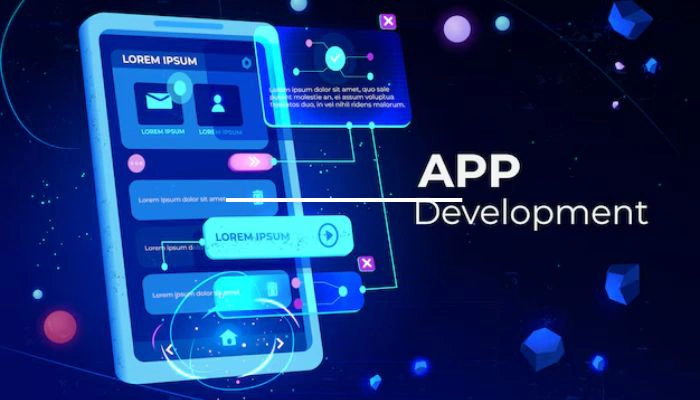
Businesses of all sizes are increasingly reliant on cutting-edge software solutions to drive innovation, enhance efficiency, and maintain a competitive edge. From developing groundbreaking applications to optimizing existing systems, the demand for skilled software developers is at an all-time high. However, the scarcity of top-tier talent and the fierce competition to secure it can make the hiring process feel like navigating a complex maze.
This comprehensive guide is designed to empower businesses with the knowledge and strategies needed to successfully hire software developers who not only possess the requisite technical prowess but also seamlessly integrate into your company culture. We'll delve into the intricacies of identifying your specific needs, crafting compelling job descriptions, navigating various recruitment channels, and conducting effective evaluations to ensure you bring on board the best possible candidates. By the end of this article, you'll have a clear roadmap to attract, assess, and onboard the software development talent that will propel your projects forward.
Read on to discover the essential steps and expert insights that will transform your software developer recruitment efforts from a challenge into a strategic advantage, allowing you to build a formidable development team capable of turning your vision into reality.
Understanding Your Needs Before You Hire Software Developers

Before you even begin the search to hire software developers, a clear understanding of your project's scope, technical requirements, and long-term goals is paramount. This foundational step will dictate the type of developer you need, the technologies they should be proficient in, and the engagement model that best suits your objectives.
Define Your Project Scope and Technical Requirements
The first crucial step is to meticulously outline what your software project entails. Are you building a new mobile application from scratch, enhancing an existing web platform, or integrating complex enterprise systems? Each scenario demands a specific set of skills and experience.
Consider the following:
- Project Goals: What problem will the software solve? What are its core functionalities?
- Target Audience: Who will be using the software? This can influence UI/UX considerations.
- Technology Stack: What programming languages (e.g., Python, Java, JavaScript, C#), frameworks (e.g., React, Angular, Node.js, Spring Boot), databases (e.g., SQL, NoSQL), and cloud platforms (e.g., AWS, Azure, Google Cloud) are essential for your project?
- Project Timeline and Budget: These factors will significantly influence your hiring strategy, including whether to opt for full-time, part-time, or contract developers.
Identify the Right Developer Archetype
Software development is a broad field, encompassing various specializations. Knowing which type of developer you need will streamline your search and help you target the right talent pools.
Here are some common developer archetypes:
- Front-end Developers: Focus on the user interface and user experience (UI/UX) of a website or application. They work with HTML, CSS, JavaScript, and front-end frameworks.
- Back-end Developers: Responsible for server-side logic, databases, APIs, and the overall infrastructure that supports the front-end. They often work with languages like Python, Java, Ruby, Node.js, or PHP.
- Full-stack Developers: Possess expertise in both front-end and back-end development, capable of handling all aspects of a software project.
- Mobile Developers: Specialize in creating applications for mobile platforms (iOS and Android), using languages like Swift, Kotlin, Java, or React Native.
- DevOps Engineers: Bridge the gap between development and operations, focusing on automation, continuous integration/continuous delivery (CI/CD), and infrastructure management.
- Data Scientists/Engineers: Work with large datasets to extract insights, build machine learning models, and design data pipelines.
=> Explore Custom Development for Upgrading Legacy Application Solutions
Choose Your Hiring Model
The way you hire software developers can vary widely based on your project's needs, budget, and desired level of control.
Consider these common models:
- In-house Hiring: Bringing full-time developers onto your payroll. This offers maximum control, cultural alignment, and long-term commitment but comes with higher overhead costs (salaries, benefits, office space).
- Freelancers/Contractors: Engaging individual developers for specific projects or defined periods. This offers flexibility and cost-effectiveness for short-term needs but may lack the deep commitment of full-time employees.
- Outsourcing/Dedicated Teams: Partnering with a third-party company to access a team of developers who work exclusively on your project. This can provide access to a global talent pool, cost savings, and specialized expertise, particularly beneficial when you need to quickly scale up.
| Hiring Model | Pros | Cons | Best Suited For |
| In-house Hiring | High control, strong cultural fit, long-term commitment | Higher overhead, slower scaling, limited local talent pool | Core product development, long-term strategic projects |
| Freelancers | Flexibility, cost-effective for short projects, quick access to specialized skills | Less commitment, potential communication gaps, managing multiple freelancers can be complex | Short-term tasks, specialized one-off projects, quick fixes |
| Outsourcing/Dedicated Teams | Access to global talent, cost savings, scalability, reduced overhead, specialized expertise | Potential time zone differences, need for clear communication protocols, less direct control over daily operations | Large-scale projects, rapid scaling, access to niche skills, budget optimization |
Crafting an Irresistible Job Description
Once you have a clear understanding of your needs, the next step is to create a job description that not only attracts the right candidates but also stands out in a crowded market. A well-written job description is your first opportunity to engage potential hires and should be both informative and inspiring.
Elements of a Powerful Job Description

Compelling Job Title: Be specific and clear (e.g., "Senior Full-stack JavaScript Developer" instead of just "Developer").
- Company Overview: Briefly introduce your company, its mission, values, and what makes it a great place to work.
- Role Summary: Provide a concise overview of the position, its primary responsibilities, and how it contributes to the company's goals.
- Key Responsibilities: Clearly list the day-to-day tasks and key deliverables for the role. Use action verbs to make it engaging.
- Required Skills and Qualifications: Be specific about the technical skills (programming languages, frameworks, tools) and non-technical skills (problem-solving, communication, teamwork) that are essential.
- Preferred Skills and Qualifications: Include any "nice-to-have" skills that would be a bonus but are not strictly mandatory.
- Benefits and Perks: Highlight what your company offers beyond salary, such as health insurance, professional development opportunities, flexible work arrangements, remote work options, and company culture initiatives.
- Call to Action: Clearly state how candidates should apply and what the next steps in the hiring process are.
Incorporating Keywords Naturally
To ensure your job description ranks high on search engines and reaches the intended audience, strategically embed relevant keywords. The main keyword, "Hire Software Developers," should be naturally integrated, especially in key sections.
For example, instead of just saying "we need someone to code," you might say, "We are looking to hire software developers with strong backend skills to join our agile team."
Additionally, incorporate other relevant keywords that candidates might search for, such as "remote software developer," "senior software engineer," "full-stack developer job," "React developer," or "Python developer roles." Avoid keyword stuffing; the content should still read naturally and provide value.
How to Source Top Software Developer Talent
Once your job description is polished, it's time to cast your net wide and find the best candidates. Relying on a single sourcing channel might limit your reach. A multi-pronged approach is often the most effective way to hire software developers with diverse skills and experiences.
Leveraging Online Platforms and Networks
Job Boards: General job boards like LinkedIn Jobs, Indeed, and Glassdoor are essential. For specialized tech talent, consider platforms like Stack Overflow Jobs, GitHub Jobs, Dice, and AngelList (for startups).
Professional Networking Sites: LinkedIn remains a powerful tool for direct outreach and leveraging professional connections. Join relevant LinkedIn groups and engage with developers in your target niche.
Developer Communities and Forums: Platforms like Reddit (e.g., r/programming, r/webdev), industry-specific forums, and open-source project communities are excellent places to find passionate developers. Participate genuinely and share your hiring needs.
Referral Programs: Encourage your current employees to refer qualified candidates. Referrals often lead to high-quality hires who are a good cultural fit. Offer incentives for successful referrals.
Partnering with Recruitment Agencies
If you're facing a significant talent gap, have specialized needs, or lack the in-house resources for extensive recruitment, partnering with a specialized tech recruitment agency can be highly beneficial. These agencies have vast networks of pre-vetted candidates and expertise in identifying the perfect match for your requirements. They can significantly expedite the hiring process and provide access to passive candidates who aren't actively looking for new roles.
The Software Developer Recruitment Process: From Screening to Onboarding
The journey to hire software developers involves a structured process to thoroughly evaluate candidates, ensuring both technical proficiency and cultural alignment.
Initial Screening and Technical Assessments
After receiving applications, the first step is to screen resumes for relevant experience, skills, and qualifications. This often involves an initial phone screening to assess communication skills, cultural fit, and basic technical understanding.
Following the initial screening, technical assessments are crucial. These can take various forms:
- Coding Challenges: Online platforms (e.g., HackerRank, LeetCode, CoderPad) allow candidates to solve coding problems, demonstrating their algorithmic thinking and coding proficiency.
- Take-Home Projects: A small, real-world project relevant to your company's work can provide insights into a candidate's practical skills, problem-solving approach, and ability to deliver working code.
- Technical Interviews: Conducted by senior developers or technical leads, these interviews delve into a candidate's understanding of concepts, architecture, and past project experiences. They often involve whiteboarding or live coding sessions.
Interview Stages: Technical, Behavioral, and Cultural Fit
The interview process typically involves multiple stages to gain a holistic view of the candidate.
- Technical Interview (Deep Dive): Focuses on specific technical knowledge, system design, debugging skills, and problem-solving methodologies relevant to the role. This is where you assess the depth of their technical expertise.
- Behavioral Interview: Explores a candidate's soft skills, such as teamwork, communication, conflict resolution, adaptability, and how they handle challenges. Questions often revolve around past experiences and how they navigated specific situations.
- Cultural Fit Interview: Determines if a candidate's values, work style, and personality align with your company culture. This can involve discussions about collaboration, communication preferences, and their approach to work-life balance. It's vital for long-term retention and team cohesion.
Making the Offer and Onboarding Effectively

Once you've identified your ideal candidate, a compelling offer is key. Be prepared to offer competitive compensation, including salary, benefits, and potential equity or bonuses, especially when looking to hire software developers in a competitive market like Kenya where average salaries vary based on experience and specialization. For instance, in Kenya, an entry-level software developer might earn around KSh 493,389 annually, while experienced professionals can earn significantly more, even up to KSh 2 million or more, depending on skills and company size.
A smooth onboarding process is critical for a new hire's success and integration into your team.
- Pre-boarding: Send welcome kits, provide necessary documentation, and set up accounts before their first day.
- First Week: Introduce them to the team, their manager, and key stakeholders. Outline their initial tasks and assign a mentor.
- Structured Onboarding Program: Provide access to documentation, codebases, and tools. Schedule regular check-ins to address questions and provide support.
- Cultural Integration: Encourage participation in team activities and social events to help them feel like a valued part of the team.
Common Challenges in Hiring Software Developers and How to Overcome Them
The journey to hire software developers is not without its hurdles. Understanding these common challenges and proactively addressing them can significantly improve your success rate.
Talent Shortage: The demand for skilled developers often outstrips supply, leading to fierce competition.
Solution: Expand your search beyond local markets to include remote talent pools. Consider training and upskilling programs for promising junior developers.
High Salary Expectations: Top talent commands premium compensation.
Solution: Offer competitive salaries and comprehensive benefits packages. Highlight non-monetary perks like flexible work, professional development, and a strong company culture.
Rapidly Evolving Technologies: Keeping up with the latest tech trends and finding developers proficient in cutting-edge tools can be challenging.
Solution: Prioritize candidates with a strong foundation in core computer science principles and a demonstrated ability to learn new technologies quickly. Invest in continuous learning opportunities for your team.
Assessing Technical Skills Accurately: Resumes don't always reflect true abilities.
Solution: Implement robust technical assessments, including coding challenges and live coding interviews that simulate real-world scenarios. Consider pair programming sessions during interviews.
Cultural Fit vs. Technical Prowess: Balancing technical skills with cultural alignment is crucial for long-term success.
Solution: Integrate behavioral and cultural fit interviews into your process. Involve team members in the interview process to get diverse perspectives on fit.
Conclusion
Successfully navigating the competitive landscape to hire software developers requires a strategic, well-defined, and adaptable approach. By thoroughly understanding your project needs, crafting compelling job descriptions, leveraging diverse sourcing channels, implementing a rigorous evaluation process, and focusing on seamless onboarding, you can significantly enhance your ability to attract and secure top-tier talent. Remember that the ultimate goal is not just to fill a role, but to build a cohesive and highly skilled development team that will drive your organization's innovation and growth.
Ready to build your dream development team? Contact us today to explore how our tailored solutions, with our exceptional software developers, can help you bring your vision to life.



